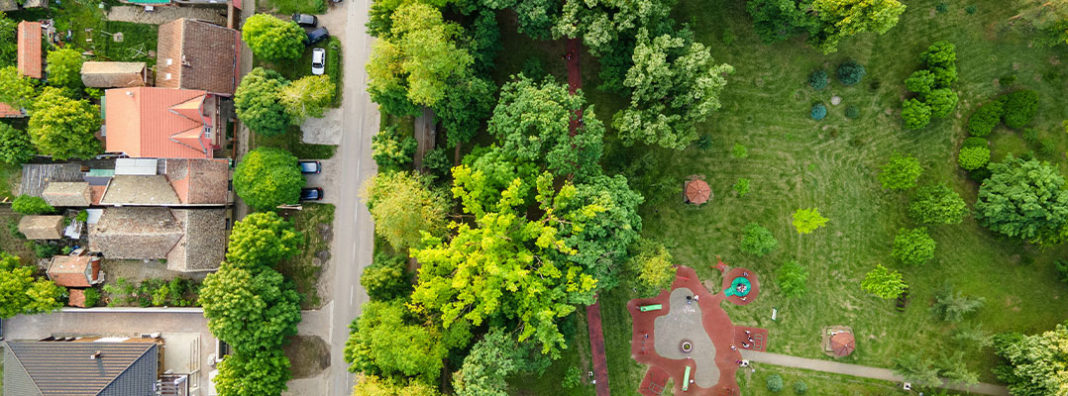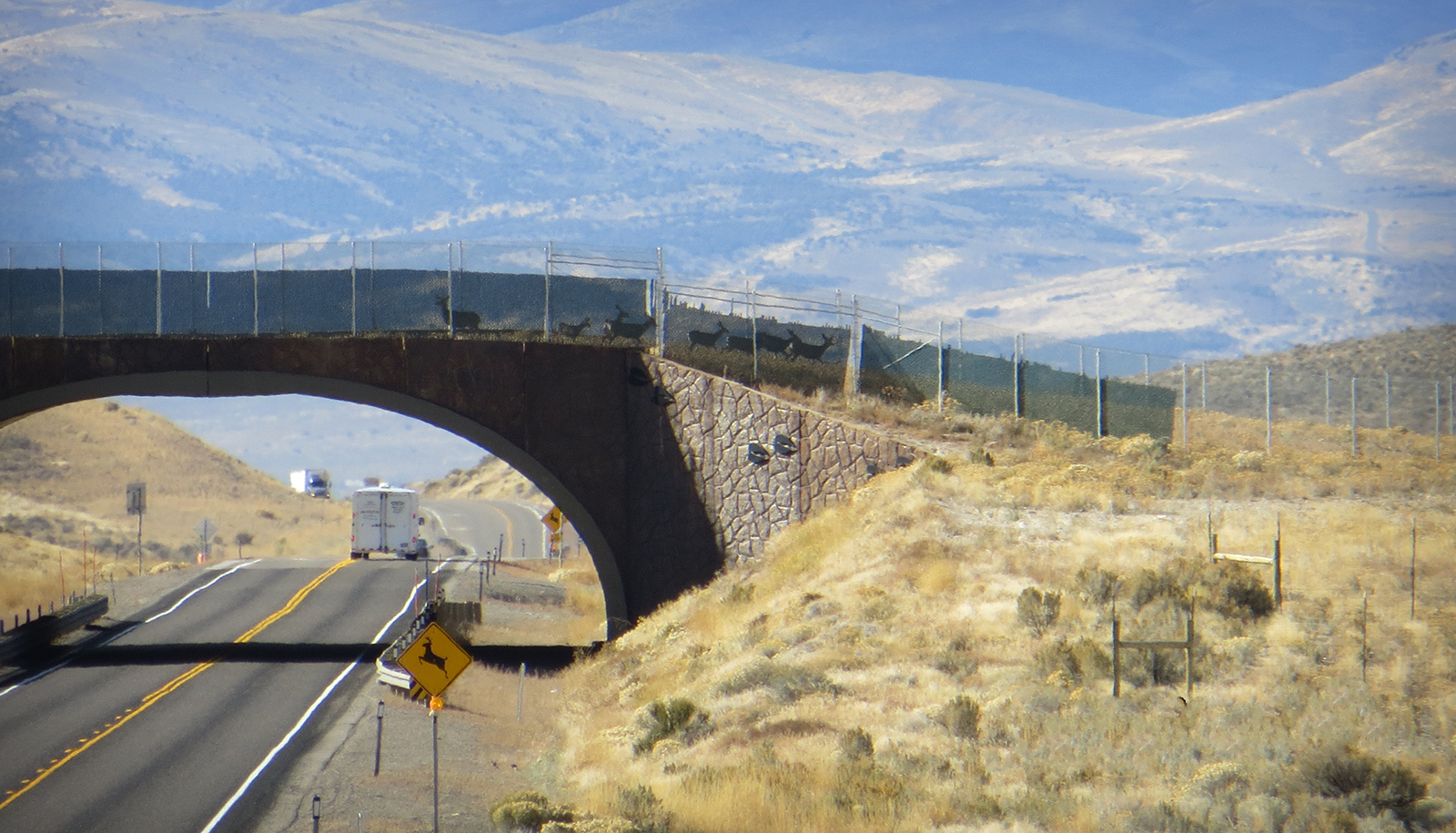
According to a 2020 study in Scientific Reports, large preserved areas may not have the best outcomes for wildlife protection. The study found that in 80 percent of protected regions, the protection provided to endangered animals was equal to or worse than if the areas had been randomly located.
Many people think of conservation as best embodied by large national parks like Yellowstone and Yosemite. Much of our conservation efforts at the federal level have focused on designating large areas as protected lands to provide both habitat for wildlife and to conserve natural resources. But for conservation to be effective, we will also have to find innovative ways to protect wildlife on non-federal lands, and to connect islands of protected areas so that wildlife can move between them.
Policy tools can help to connect our current protected areas and even make way for wildlife in developed areas. Two promising options for policymakers to consider are exploring conservation in urban spaces and establishing wildlife corridors. These approaches can help create a mosaic of conservation that connects wildlife to islands of protected habitats.
Urban conservation provides habitat in developed areas
Emma Marris discusses the key misconception about nature in her 2011 book, Rambunctious Garden. Nature is not found only in large, untouched areas but also in populated areas dotted with parks and other bright spots of biodiversity. Marris highlights the growing urban population, showing that cities only cover 3.5% of land in the U.S. but house 63% of the U.S. population. By changing the way we view urban spaces and utilizing the small pockets of nature found in cities, we can create a more connected habitat for wildlife that live in and around cities.
Urban parks and green spaces in cities can be used to help achieve the goals of conservation. These natural spaces can be integrated into a city to create areas furthering conservation efforts. Cities without open space for parks can transform retired industrial facilities and empty lots into green spaces. Other examples of green spaces include green roofs (or rooftop gardens), community gardens, and unmanaged vacant lots.
The Duwamish River cleanup is a prime example of urban conservation and part of the EPA’s Urban Water Partnership program. The partnership has identified 20 rivers and watersheds across the United States in need of revitalization. Its goal is to revitalize the communities surrounding the area and improve the quality of the habitat provided by the rivers. Following the degradation of one of Boeing’s facilities and the subsequent release of harmful chemicals into the watershed, Boeing began to aid the clean-up project. The clean-up, primarily focused on the removal of polychlorinated biphenyls (PCBs), has the added benefit of restoring habitat for wildlife that relies on the health of the watershed. Projects like this one show how improving the habitat already located in our cities can create a more diverse and sustainable ecosystem.
Another example of an organization working to get good conservation outcomes from urban spaces is the Conservation Fund. The fund partners with cities to improve urban conservation efforts. They work to develop parks, improve water management, and develop green infrastructure. The group partnered with local organizations and state officials in Florida to ensure the continued health of the Loxahatchee River Watershed. The fund ensured that urban development around the area maintained the habitats of the local wildlife. By partnering with local governments, organizations like the Conservation Fund can increase the importance of conservation in the development of cities.
The pockets of nature found in urban areas provide habitat for a multitude of animals and insects and help to connect different habitats. A 2014 study in the Ecological Society of America found that rooftop gardens increased habitat connectivity of mobile species, like bees, and could lead to increased connectivity of habitats on the ground. A connected urban green landscape provides pathways that increase genetic diversity in wildlife and aid in foraging and migratory activities. As urban development continues, including green spaces in our urban planning will increase the biodiversity of our cities and provide better habitats for the species that share them with us.
Wildlife corridors help connect habitat
Valuable habitat for species is often fragmented, leaving wildlife with no way to travel between areas they depend on for their survival. This makes connecting existing habitats more important. Wildlife corridors are the paths wildlife use to cross between habitats. Protecting existing wildlife corridors and establishing new ones provides safe ways for animals to migrate between existing habitats. A connected landscape also makes biodiversity more resilient to the effects of climate change.
Wildlife corridors can take many forms. Some examples are local corridors, regional corridors, flyways, rivers, and urban greenways. Although these corridors may seem challenging to implement, land use practices can be adjusted to augment existing landscape elements that already contribute to wildlife corridors. For example, strips along roadways can be planted with specific species to help provide links between patches of useful habitat. Protected wetlands can provide important stopping points for migratory bird species. Buffers can also be created around areas with important habitat to help species reach them.
Photo: Nevada Department of Wildlife.
In Nevada, a man-made wildlife corridor provides safe crossings for many animals. Some of the animals utilizing the crossing include elk, bobcats, and mountain lions. Over four years, 35,000 mule deer successfully crossed the wildlife corridor. Wildlife corridors not only protect animals, but also humans. Vehicle collisions with wildlife cost an average of $4,135 per collision – a total of over $6 billion annually in the United States. The installation of wildlife fencing and crossing sites has led to a 97% decline in collisions between cars and large wildlife along parts of the Trans-Canada highway. In Oregon, the total number of vehicle collisions with wildlife in 2020 was 5,997. If even 60% of these collisions were prevented by the implementation of crossing sites and fencing, the total cost of wildlife collision accidents would decrease from about $25 million to $10 million.
Wildlife corridors can also be used in conjunction with wildlife refuges which help to provide animals with areas to migrate to and mate. For ducks and geese, wildlife refuges in the heartland of the United States “serve as stepping stones to help birds weather their journeys.” These refuges offer safe spaces for birds to find food and water before they continue their migratory journey.
Wildlife corridors can also improve urban conservation efforts. Urban greenways connect open areas across cities. They provide both recreation for humans and connected areas for wildlife to travel. In Raleigh, North Carolina, 3,700 acres are connected by the Capital Area Greenway. The greenway provides 117 miles of trails for both humans and wildlife. Of course, the benefits of such projects must be weighed against their cost to ensure we are making investments in habitat connectivity that will truly pay off.
Large protected areas are islands of conservation
Urban conservation and wildlife corridors can help us to connect islands of important habitat across the country, including federal lands. Most federal conservation efforts, like the establishment and management of national parks, focus on large areas of protected lands. This approach creates large chunks of nature that may not provide wildlife with the habitat they need to thrive or the ability to travel between them. Parks also face the challenge of prioritizing not just conservation but also recreation.
The United States has 423 national parks that span 84 million acres. Despite their protected status, the primary purpose of national parks is not to conserve wildlife. The mission of the National Park Service emphasizes the preservation of unimpaired natural and cultural resources “for the enjoyment, education, and inspiration of this and future generations.” This mission describes the NPS’ dual focus on both preservation of natural resources and recreation in our national parks.
Two key challenges national parks face in the conservation of habitat are development of the surrounding areas and increasing numbers of visitors annually. The areas surrounding national parks are often developed for agriculture, mining, and housing. That development may trap the species within the parks by cutting them off from their habitat. Increasing numbers of visitors also make maintaining the habitats of the animals living in the parks more difficult. Park rangers are unable to minimize the impact visitors have on the degradation of habitat. As the number of visitors increases, habitat degradation also increases.
Connecting conservation islands
Establishing urban green spaces and a nationwide wildlife corridor system would help make America’s conservation efforts more successful in protecting wildlife and conserving natural habitats. By integrating urban green spaces with new urban planning, we can help achieve better habitat connectivity.
These ideas are also gaining traction in policy discussions. The Build Back Better bill currently under review in the Senate designates $10 million to map wildlife corridors and provide monetary assistance for states working to implement and maintain corridors. The Wildlife Corridors Conservation Act would go even further by creating a National Wildlife Corridors System and stewardship fund for citizens to donate to its upkeep. The bill in its entirety has not yet been reviewed by the Senate. The Act would use federal lands and waters to create the system. Twelve states, including Utah, have already begun to implement their own policies to protect existing wildlife corridors.
Connecting protected areas and creating safe ways for wildlife to migrate will be key in allowing humans to coexist with nature. Urban conservation and wildlife corridors can help us achieve better conservation outcomes. These tools improve existing conservation efforts and create new ways for us to interact with wildlife and nature in our daily lives.



